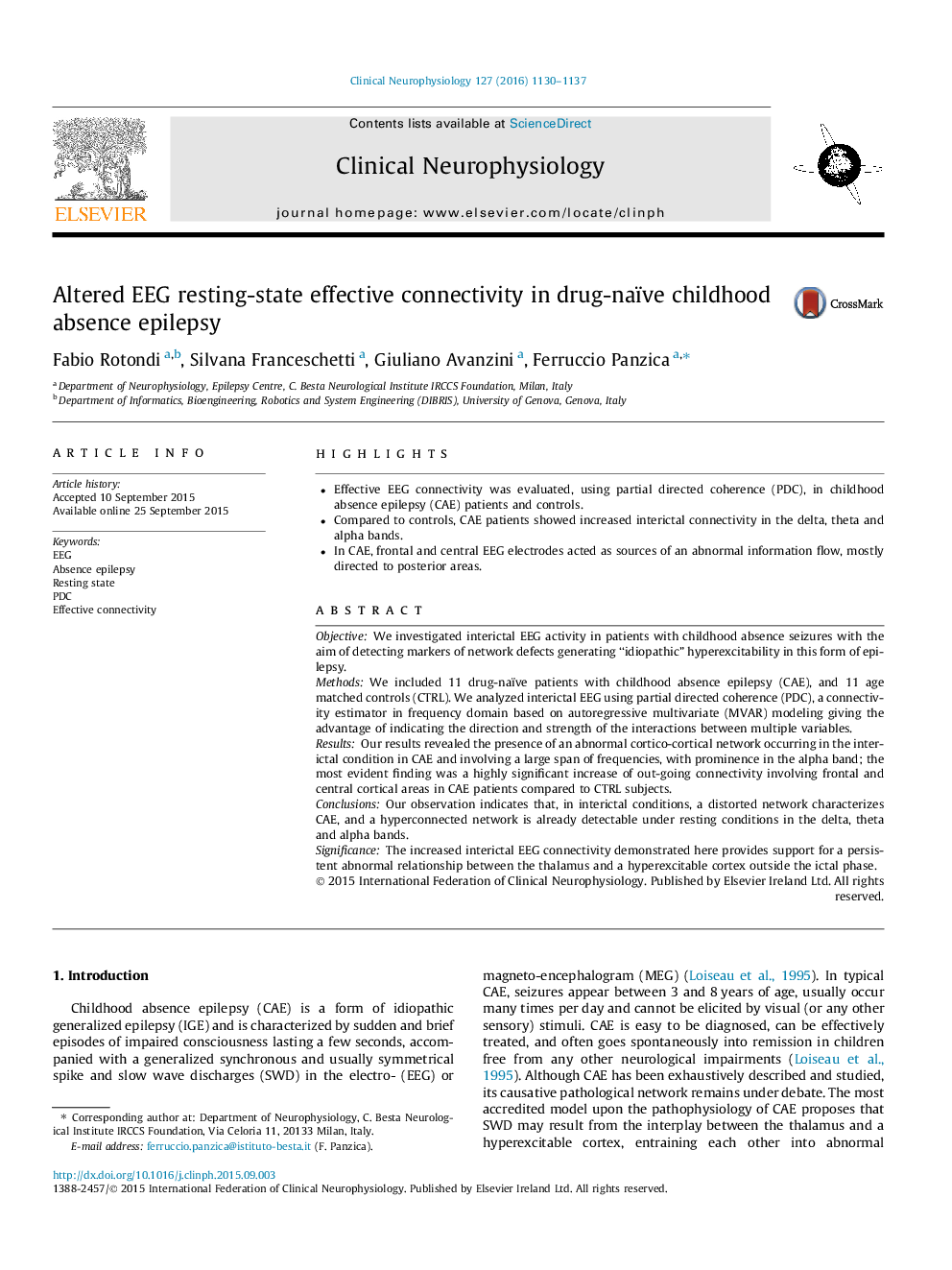| Article ID | Journal | Published Year | Pages | File Type |
|---|---|---|---|---|
| 6007534 | Clinical Neurophysiology | 2016 | 8 Pages |
â¢Effective EEG connectivity was evaluated, using partial directed coherence (PDC), in childhood absence epilepsy (CAE) patients and controls.â¢Compared to controls, CAE patients showed increased interictal connectivity in the delta, theta and alpha bands.â¢In CAE, frontal and central EEG electrodes acted as sources of an abnormal information flow, mostly directed to posterior areas.
ObjectiveWe investigated interictal EEG activity in patients with childhood absence seizures with the aim of detecting markers of network defects generating “idiopathic” hyperexcitability in this form of epilepsy.MethodsWe included 11 drug-naïve patients with childhood absence epilepsy (CAE), and 11 age matched controls (CTRL). We analyzed interictal EEG using partial directed coherence (PDC), a connectivity estimator in frequency domain based on autoregressive multivariate (MVAR) modeling giving the advantage of indicating the direction and strength of the interactions between multiple variables.ResultsOur results revealed the presence of an abnormal cortico-cortical network occurring in the interictal condition in CAE and involving a large span of frequencies, with prominence in the alpha band; the most evident finding was a highly significant increase of out-going connectivity involving frontal and central cortical areas in CAE patients compared to CTRL subjects.ConclusionsOur observation indicates that, in interictal conditions, a distorted network characterizes CAE, and a hyperconnected network is already detectable under resting conditions in the delta, theta and alpha bands.SignificanceThe increased interictal EEG connectivity demonstrated here provides support for a persistent abnormal relationship between the thalamus and a hyperexcitable cortex outside the ictal phase.
